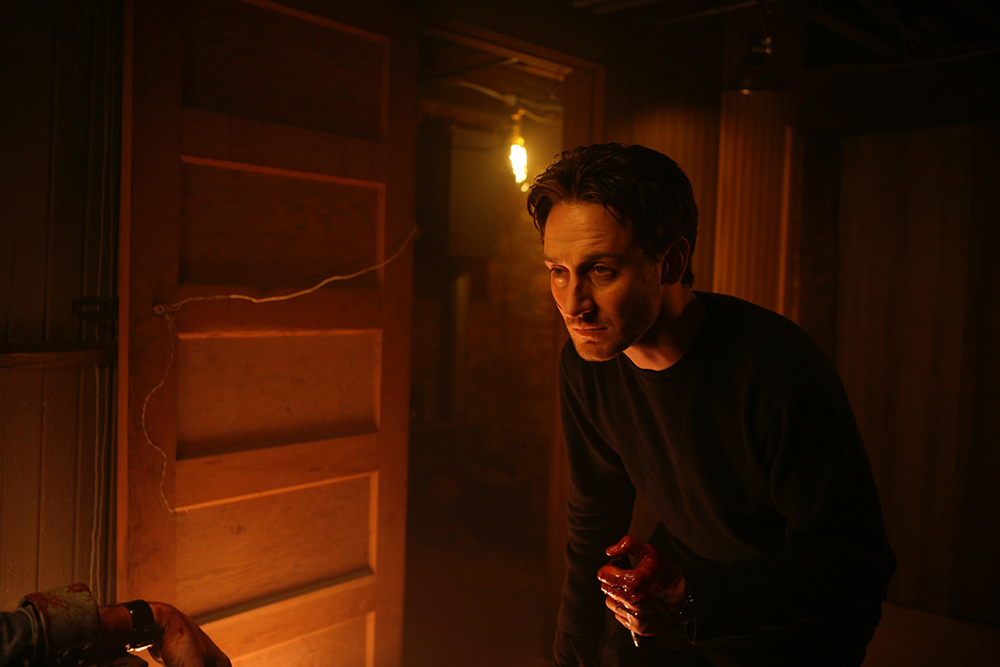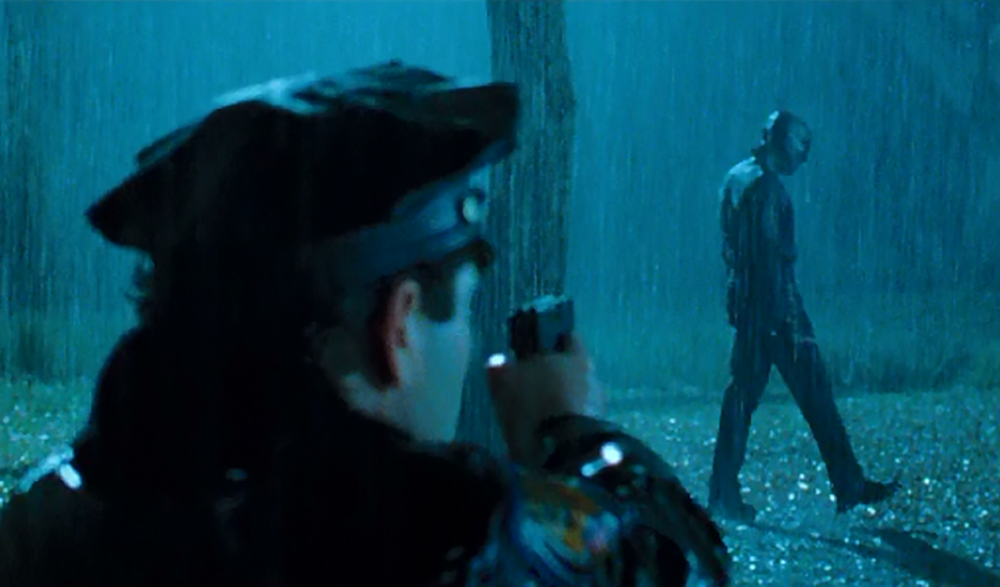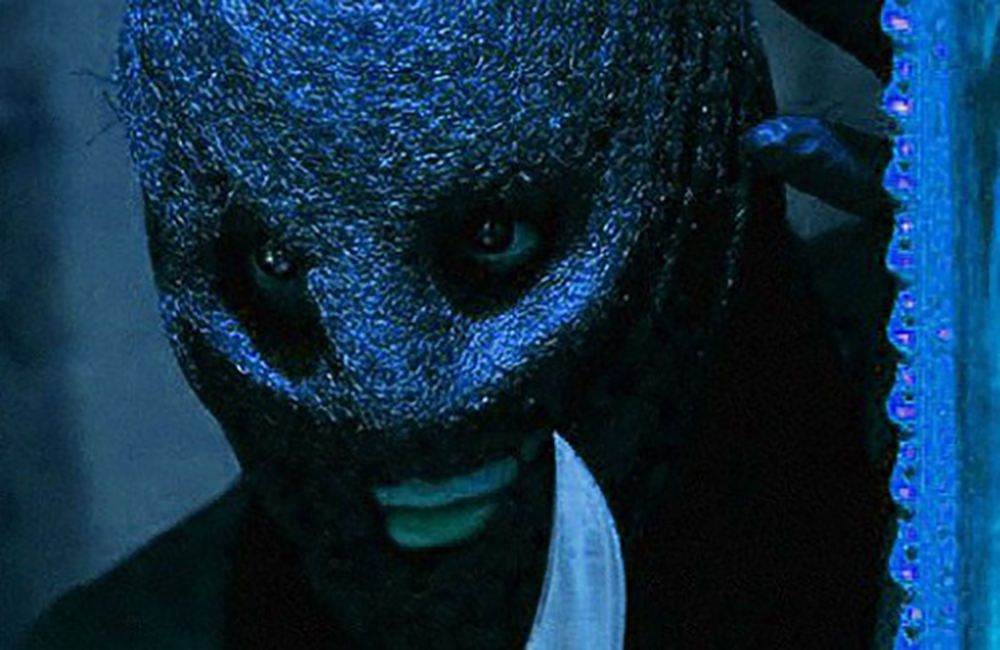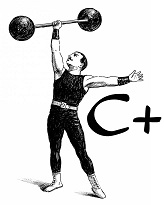The horror genre has been getting a revamp. Modern filmmakers seem pleased to release movie-after-movie that substitute buckets of gore for horror and suspense. Big budget blockbusters such as “The Texas Chainsaw Massacre” and lesser-known movies such as “Laid to Rest” are the most egregious offenders, but few modern horror flicks avoid this trap.
However, innovative filmmakers attempt to give the genre life support. Remakes of “Friday the 13th” and “A Nightmare on Elm Street” showed promise. However, as remakes, they didn’t stand alone as unique attempts at horror. Which begs the question, where has all the good horror gone?
A Film Branching Off From the ‘Saw’ Craze
Enter “The Collector.” The 2009 horror attempt by writers Marcus Dunstan and Patrick Melton showed promise. It’s not for originality of scares, but for originality of concept, plot, and atmosphere. The movie, produced with a budget of $3 million, established the movie in the horror genre. However, it remains to be seen if the effort will succeed as a standalone film in a sea of copycat remakes and less than desirable gore fests. It made a modest box office earning of $9 million.
The movie opens with a quick scare, and sets the pace for events to soon follow. Coming home from a late party, tragedy befalls a well-to-do couple as they are lured in and attacked by the vicious Collector (Juan Fernández). The scene is effective in keeping us in suspense, not giving away much at all about this sinister madman or his designs, while setting up the rest of the film.
Also Read: Halfway2Halloween—‘Mannequin’ is a Good Horror Short that Sets the Stage with Eeriness and Tension
We are next introduced to the movie’s protagonist, Arkin (Josh Stewart, T.V.’s “Criminal Minds”), and the characters and setting that will be the focal point for the rest of the film. At a posh country setting, Arkin is working construction at the lovely home of the Chase family. Though roughly ten minutes in length, the opening shows us much about Arkin and the family he will be inextricable tied to for the rest of the film. The family is your run-of-the-mill, upper class variety. The wife (Andrea Roth), treats her vain façade with Botox injections, the father (Michael Reilly Burke, “Bundy,”) is a successful jewelry broker, and their teenage daughter Jill (Madeline Zima), we see protesting an approaching family vacation, bumming a cigarette from Arkin and getting into a fight with her mother. The family’s inner-functioning and their outward appearance are in stark disagreement.
Is ‘The Collector’s’ Protagonist a Hero, or a Villain?
We also learn that while posing as a mere worker at the family’s home, Arkin is really a cat-burglar. He has his eye on the prize: a large diamond stashed away in a safe in the couple’s bedroom. Arkin has been waiting patiently for the chance to strike. He has been casing the house for some time. However, his hand is forced when his ex-wife (Daniella Alonso) gets in trouble with a loan shark. Arkin is forced with a pressing deadline: he must steal the diamond by midnight, or the loan sharks will descend.

Arkin makes a quick deal with a mobster (Robert Wisdom) to sell off the diamond, gets roughed up a little, and we learn more about his character. He is cool under pressure, doing what he needs to do, often without reflection on personal harm it may cause him. This is important character development (seldom seen in modern horror films), because Arkin’s ability to work well under extreme duress is about to be called into question.
Those waiting for the horror to begin need to wait no longer then when Arkin enters the family’s house to commit his crime, assuming they are on vacation. However, he is sorely mistaken. He quickly learns that someone far more sinister, the vicious Collector, has already made it inside. He has kidnapped the husband and wife and has involved them in his murderous game. The Collector himself is an enigma, and it is here the filmmakers have created a genuinely scary antagonist. Draped in all black, and with an ill-proportioned homemade mask with eyes that glow with evil, we never see enough of him to get a clear picture. However, we understand enough to know he is a force to be reckoned with at all costs.
But Yet Another Horror Film with an Invincible Killer
Arkin, deciding to attempt to save the family he came to rob, negotiates a house full of macabre traps. While many reviews labeled this part of the movie as too “Saw-esque,” it really doesn’t take away from the film. The fear and suspense of the movie comes from Arkin’s numerous near misses with the masked madman. It comes, also, as he tries to remain cool under pressure as he’s slowly picked away by the sinister traps. Razor wire, acid-covered floors, spiked staircases, hanging fishhooks, and rigged bear traps are only some of the snares that the Collector’s victims fall prey to, with less than desirable outcomes.
While innovative, one of the problems with the Collector’s many traps lies in the complexity of their design, and their implementation (which we are to believe were set up in the time it takes Arkin to leave the house in the afternoon and return that evening). Further complication arrives in the form of the pseudo-invincibility the Collector seems to possess in a barrage of attacks that involves being roughed up by Arkin, kicked down a flight of stairs, and stabbed in the leg by a chandelier outfitted with kitchen knives. No matter what Arkin does to him, he seems to be just fine. However, Arkin fares much worse. By the end of the movie, believing either of these men is still walking requires a severe suspension of disbelief.

While not a perfect film, as the ending lives up to the expectations of a world of films that absolutely must end in sequel, “The Collector” does offer a refreshingly original take on the horror genre by establishing many genuinely skin-crawling and nightmare-inducing moments.
Of Moral Dilemmas and Sequel-Baiting Endings
The movie also offers up an interesting moral dilemma and character in that of Arkin. The morals of a thief who must become a hero requires us to question the nature of evil, and how far even disreputable men will go to do the right thing. The best scene in the film involves Arkin as he escapes from the house and begins to run to safety. He looks back to see the Chase’s 5-year-old daughter Hannah still trapped inside. We feel his horror and his dilemma. It’s a testament to the filmmakers’ ability that we, as viewers, care about Arkin enough by this point to want him to leave the girl and run. It’s a greater testament to Arkin’s character and morals that he doesn’t.
Also Read: Review: ‘The Ring’ One of the Best Horror Movies of the Century
“The Collector” will surprise you. The film offers a formidable adversary in its villain, and an unlikely hero in Arkin. It offers edge-of-your-seat suspense, and nail-biting terror in scenes you pray will be over sooner than they are. It doesn’t reinvent the genre, riding finely on the coattails of torture horror. However, it takes admirable steps to revitalize it. The ending, which suffers from the originality of the first and second acts, doesn’t ruin the film. I question, though, what a stronger ending would have done for the movie. In a sea of sequel-laden productions, I wonder what prevents filmmakers from ending a good concept as a risky, standalone film instead of going for the easy sequel. “The Collection,” slated for release in 2012, promises to explore the Collector once again. But we won’t hold our breath for the same originality offered in the premise of this first film.



1 Comment
Pingback: » The Collection (R)